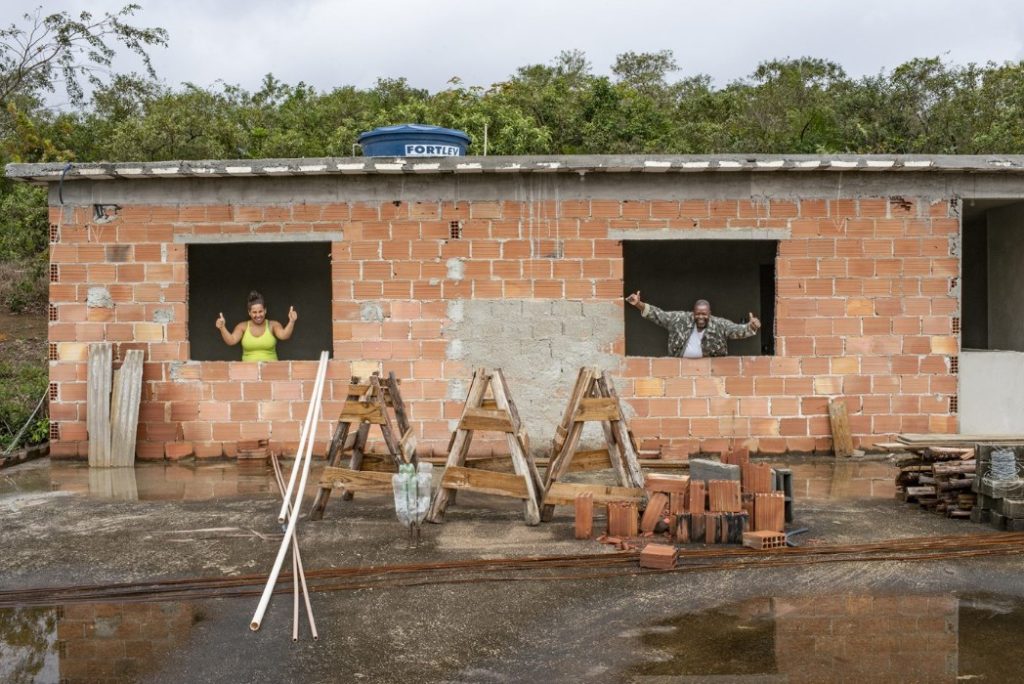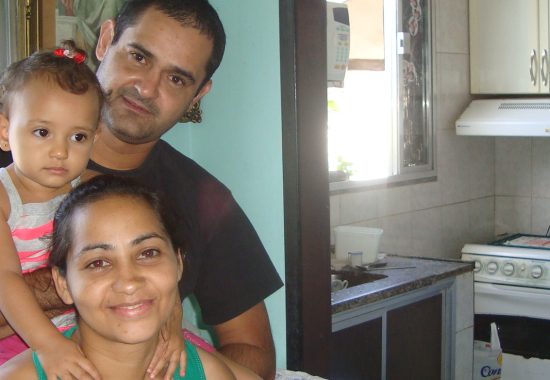

The life of Ricardo’s family, then a 6-year-old, changed in 2011. The boy had just come out of his coma after severe anemia. He needed some infrastructure at home for his physical therapy and to be able to fully recover. Instituto Dara carried out a sanitation and expansion project that transformed this family’s life. According to the mother, Cristiane, the change inspired the community. “The neighbors were surprised: ‘What’s going on in her life? Her home suddenly got beautiful…'” she recalls in an interview years later. “That’s when everyone started painting their homes, getting into repairs… That was the moment when our street, our neighborhood, began to be esteemed.”
Instituto Dara’s consultancy
Instituto Dara’s Housing team also follows up all the families served. For most families, going through a consulting step is good enough. Experts advise on every aspect related to the home: from guidelines on how to proceed with a renovation, what needs to be changed in the place to make it healthy, what are the rights and duties of a tenant to tips on simple actions, such as housekeeping and maintenance.
The target audience of Instituto Dara are very low-income families living in peripheral communities. Because of their low income, usually earned from government cash transfer programs, the residences are sometimes unfinished or carelessly built.
The most common problem is damp, the cause of many respiratory diseases and allergies in general. And children–the link between families and Instituto Dara–suffer the most. The reasons include non-waterproofed walls, poorly maintained plumbing, and walls that are quite close to or leaning on unprotected ravines.
The Social Architecture Concept
The Housing area operates with the social architecture concept, that is, to provide the minimum conditions necessary for a residence to be healthy. Based on this principle and using waterproofing as an example, when a residence is watertight — in which no water or damp enters — we are applying social architecture, even if it is not painted.
Making homes watertight is important, but working on the family’s self-esteem, making it “beautiful”, also is. Waterproofing a home does not disqualify working on the family’s self-esteem, but rather both complement each other. For this, an individual approach is conducted covering the needs of the families and the extent of the work. Here, an important detail is to be considered: the active participation of the family. When the journey at Dara ends, the family is confident and informed to continue neutralizing any unhealthy aspects of their residence and making improvements.
Figures related to precarious housing
According to a study conducted in partnership with Instituto Locomotiva, Data Favela and the Central Única das Favelas (CUFA), 17.1 million people live in Brazilian slums, the vast majority of which are in metropolitan regions (89%). These areas include precarious housing, constructions in risk areas, and sanitation problems that have long been overcome in large cities by proper water supply, sanitation, and regular garbage collection.
Small attitudes make a difference
Using damp as an example, Dara’s team teaches how to clean damp walls periodically with a bleach solution to prevent mold growth. It also encourages the family—usually the mother—to carry out small repairs without the help of professionals, such as maintaining pipes and valves.
Even when a professional is needed, our team teaches how to include small expenses in the family budget and why it is important to do so. A water filter, for example. People usually drink tap water without being aware of how it can harm their health, risk food safety, and increase parasitic contamination.
The risk of cross-contamination
Another common misconception is using a bucket to flush the toilet because the flush valve has broken. Although it may seem harmless, the use of a bucket increases cross-contamination: the splashes from the toilet may spread throughout the bathroom and over a person’s body, who would later go to bed and hold his or her children in his or her arms. Just washing your hands is not enough.
“I can’t afford that” is the natural response. But how much does it cost? Changing the candle of a candle filter or hiring a handyman from the community to repair the flush valve are cheaper expenses than a family might think. These are small interventions that fit into the budget with minimum planning and help solve serious problems for a long time. Information in such cases is the most precious benefit.
Structural interventions
Some structural problems of the residence, however, are more complex, expensive and require some intervention, which is also provided by the Housing team. As Instituto Dara’s budget is limited, the families should meet some priority prerequisites to apply for this benefit. The main prerequisite is the participation of the applying family in the Family Action Plan (PAF).
If the requirements are met, then the family is granted the renovation and is responsible for choosing the building professionals and monitoring the work. Giving autonomy to families is part of our service since it directly impacts their self-esteem. During the completion of the work, many begin to realize that they can conduct an intervention that is not only about their homes, but rather about the life of both the family and the community. The option for the family to be responsible for investigating and choosing professionals and suppliers is also a way of stimulating the local economy and strengthen community bonds, as happened to Cristiane’s family.




